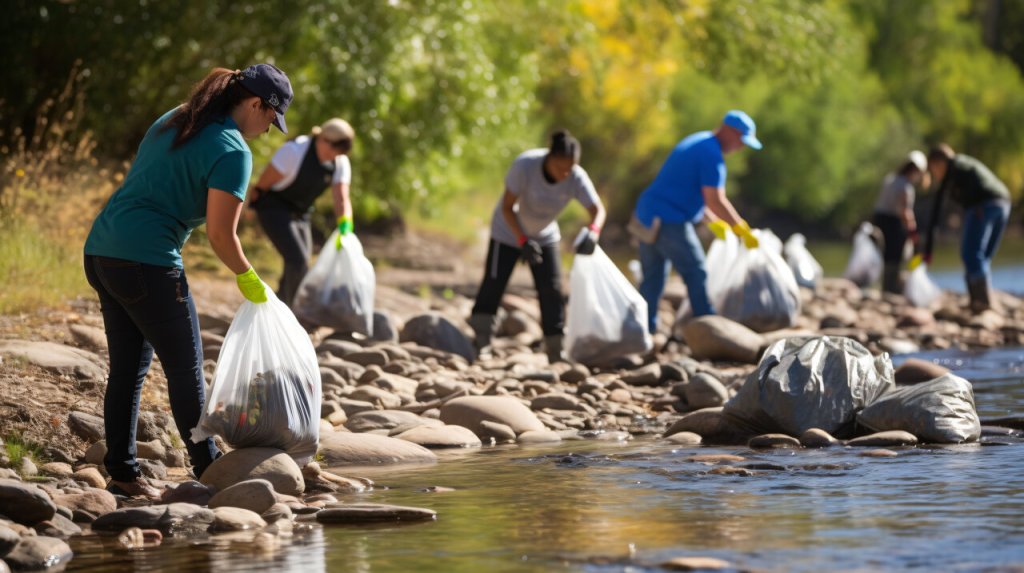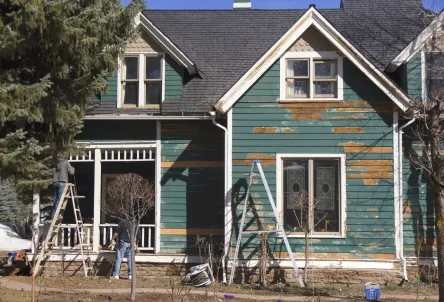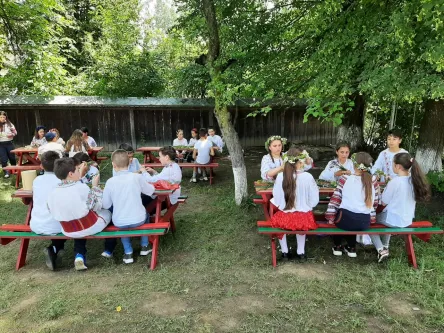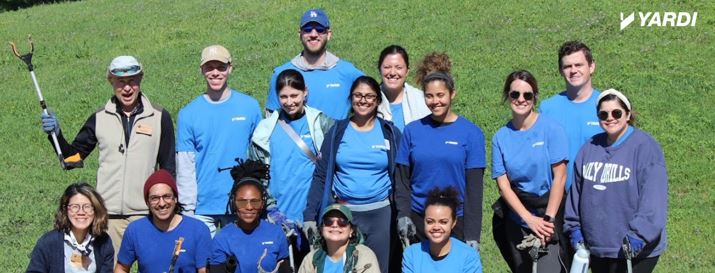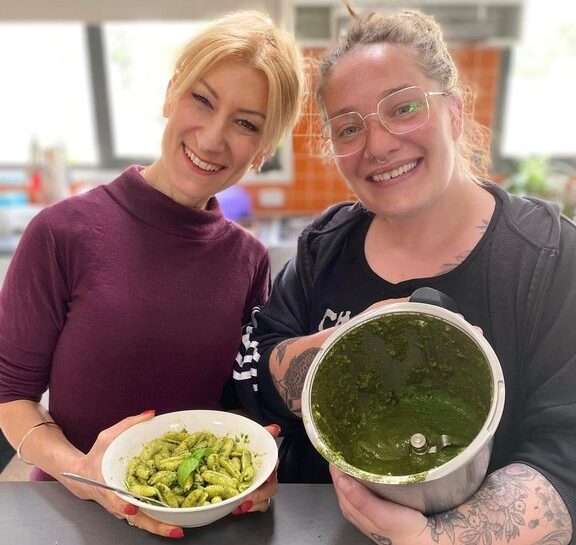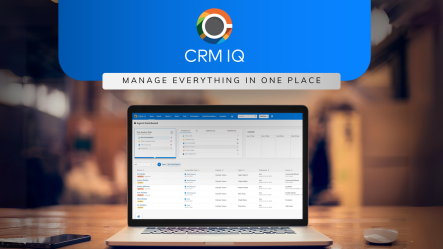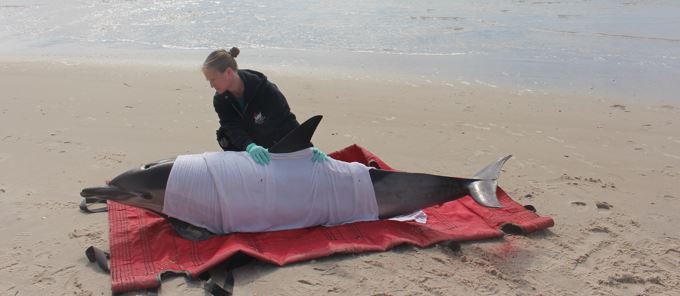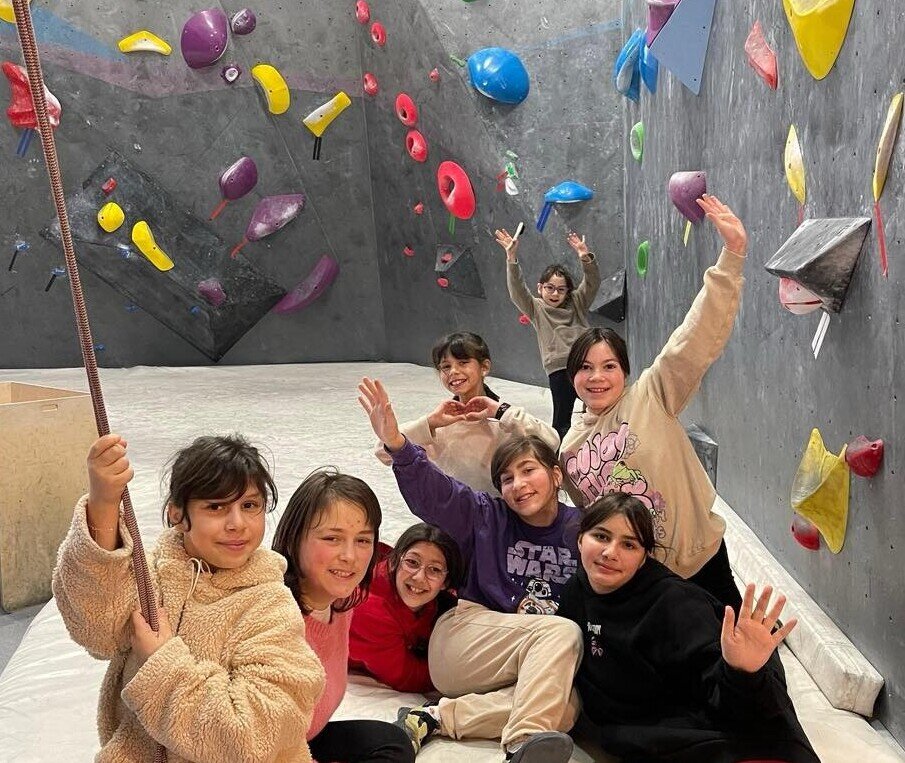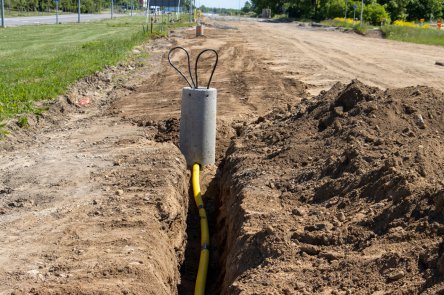Student housing remains a resilient sector with promising long-term growth prospects, attracting significant capital despite ongoing challenges, according to the latest Yardi Matrix webinar held Thursday. Find the full recording here and find the presentation slides here. However, investors navigating the student housing market require a nuanced understanding of its unique dynamics and the ability to identify opportunities amid volatility. As of March, the average rent reached $895 per bedroom, marking an all-time high for the sector. A total of 41 universities tracked for the Yardi Matrix National Student Housing Report had double-digit rent growth. “Long term sector growth is good. This is going to continue to attract capital, particularly in light of what we expect to be ongoing struggles in many of the markets in multifamily. And you’ve got to really kind of pick the winners,” said Jeff Adler, vice president of Yardi Matrix. Student housing can offer savvy investors higher returns but comes with inherent volatility, characterized by fluctuating performance among different schools. Examples include colleges like Ole Miss and Mizzou, which showcase how poorly performing schools can experience a strong rebound, while previously successful institutions like the University of Nevada, Reno, may face challenges due to oversupply. “There’s inherent lumpiness, or volatility, in the financial performance because supply tends to come in not evenly, but in large chunks and needs to get absorbed,” said Adler. “As you think about performance at a school, you need to see through those cycles, and/or you can actually use those points as opportunities to buy or sell if you know where the timing is going to hit.” Success in student housing hinges on a diversified portfolio across markets and strategies, not solely reliant on enrollment or rent growth metrics. Data-driven insights from Yardi Matrix help set realistic expectations and navigate short-term volatility while focusing on long-term fundamentals. The student housing sector is relatively young, with ample opportunities for development, rehabilitation, and value-added strategies. “One of the things I have taken away is just how young this industry is. (Around) 80 percent of the inventory is less than 25 years old, which means that there are still opportunities to develop a rehabbed value-added sector and an acquisition strategy,” Adler said. “The primary strategy in the sector has been new development, and that makes a lot of sense, but there are other strategies emerging as this industry begins to age.” Such strategies involve developing or acquiring properties near flagship state schools, emphasizing demographic trends and acceptance rates. Value-add strategies target slower-growth schools with potential for improvements or strong barriers to new supply. Opportunistic approaches involve timing markets based on supply and demand waves, with considerations for market characteristics and regulatory risks. With careful planning and informed decision-making, investors can unlock the full potential of this dynamic and resilient sector. View the full event recording with many more student housing investment insights, and get even more data from the latest Yardi® Matrix National Student Housing...
Honoring the Planet
Philanthropy for the Environment
Yardi is energized for good! Our corporate motto is to take care of our clients, take care of our employees, take care of our communities, stay focused and grow. In honor of Earth Month, we would like to showcase a few Yardi-supported nonprofits that focus on keeping the planet green and healthy and teaching younger generations to care for it, its animals and its community. Along with ongoing projects, Yardi has significantly contributed to making the world a better place. Environmental Stewards: These grassroots nonprofits aim to create a more sustainable environment through advocacy and community engagement. Each has a unique, discerning way of focusing on the planet. Community Environmental Council: Santa Barbara, Calif.: For over 50 years, CEC has strategically catalyzed change on the Central Coast of California, specializing in real-life solutions for environmental problems. Keep Truckee Meadows Beautiful: Reno, Nevada, founded in 1989, works to reduce waste and hosts several community clean-up events, overseeing hundreds of volunteers. With thousands of volunteers contributing to clean-ups, KTMB has gathered over 100K pounds of trash and green waste. Chattahoochee Nature Center: Roswell, Georgia, founded in 1976, preserves and protects the Chattahoochee Forest and river and offers various educational and conservation opportunities, such as guided hikes and canoeing. This is the only organization providing direct access to the Chattahoochee River in the Atlanta metroplex. Texas Conservation Alliance: Dallas, Texas, founded in 1972, works to protect wildlife, state forests, prairies and rivers. Along with various trash pick-ups, TCA performs annual tagging of Monarch butterflies. During bird migration, Dallas turns off the lights downtown to decrease light pollution so the birds have a safe route. Explore Ecology: Santa Barbara, Calif., founded in 1990, promotes environmental education and artistic expression. With its unique approach to turning beach scrap into art, Explore Ecology offers outdoor classrooms on school campuses and provides a “Makerspace” for community creative collaborations. The Los Padres Forest Association: Goleta, Calif., founded in 1979—ensures that the second largest forest in California, Los Padres Forest, thrives and remains safe for all to enjoy. Thanks to this organization’s efforts, the popular Red Reef Trail, nearly non-useable in 2020, is restored and in great shape for everyone. Animals and the Environment: The following nonprofits work to rehabilitate, conserve and preserve amazing creatures, both in the wild and in captivity. NY Marine Rescue Center: Riverhead, New York, founded in 1996, is the only permitted organization in the state of New York to rescue and rehabilitate marine mammals and sea turtles. The Wild Animal Sanctuary: Keensburge, Colo., founded in 1980, rescues captive-bred carnivores from abuse and neglect. With their large acreage habitats, this organization travels worldwide to rescue animals suffering with state-of-the-art medical care and top-quality food. Cleveland Zoological Society: Cleveland, Ohio, founded in 1957, partners with the Cleveland Metroparks Zoo to create compelling experiences for people to connect with wildlife through conservation efforts, education, and program opportunities. Kids and the Environment: Though adults and corporations are there to fund many of these nonprofits, children are the real champions for change. When children learn the responsibility of sustainable efforts from a young age, future generations will make the magic happen. The following nonprofit organizations work with younger people through education, advocacy and events. Candlelight Ranch: Marble, Falls, Texas, founded in 1999, provides nature-based camps for children with special needs. Activities include several outdoor excursions such as ziplining, hiking, and suspended ropes courses. Wilderness Youth Project: Santa Barbara, Calif., founded in 1999, connects children to nature with guided, inspired, skilled mentors and volunteers for more green time than screen time. Children gain confidence, a heart for adventure and care for others. Instead of just taking notes, they are out exploring, climbing trees, looking at animal tracks and watching the waves on the West Coast as the sun sets. Major Scale Environmental Projects: Protecting and preserving land and reducing the carbon footprint are essential to changing the...
CAPSA
Embarking on Healing Journeys
Yardi-supported nonprofit CAPSA (Citizens Against Physical and Sexual Abuse), was founded in 1996 in Logan, Utah. CAPSA is at the forefront of confronting domestic violence, sexual abuse and rape within communities across northern Utah and southern Idaho. Their mission transcends providing stats. It is about catalyzing real and lasting change in the lives of those trapped by cycles of violence and abuse—a challenge that knows no borders. “Domestic and sexual violence are pervasive issues that cut across all demographics, impacting countless lives in both visible and hidden ways. These are not just personal or private issues but societal ones that demand comprehensive responses,” explains James Boyde, chief development and marketing officer. CAPSA is dedicated to pioneering innovative solutions that offer safety, empowerment and healing for survivors. Its comprehensive suite of services includes: Emergency shelter 24/7 crisis support Clinical therapy Transitional housing- tailored to meet survivors where they are. Beyond these services, CAPSA is building more robust, more resilient communities through prevention education and advocacy and fostering an environment that encourages survivors to reclaim their autonomy and craft their pathways to recovery. “In the face of growing demands for our services, CAPSA remains unwavering in our commitment to transforming despair into hope and fear into security. We aim to support survivors in their immediate crises and equip them with the tools and resources they need for a future free from violence,” said Boyde. Through collaboration, innovation and community engagement, CAPSA is not only just addressing the symptoms of domestic and sexual violence but also working to eradicate its roots. “Our partnership with supporters like Yardi is instrumental in scaling our impact, enabling us to reach more individuals in need and to continue our mission of creating safe, empowered communities worldwide. Together, we can forge a...
The BRRRR Method
Build Generational Wealth
As real estate investors, putting in the work is required for the most significant ROI. Real estate investing can be a one-and-done deal or a strategy with more work but higher profits. However, using the BRRRR method, recover as much capital as possible from a project. Let’s delve into the BRRRR method and how to use it to negotiate deals, scale up your real estate portfolio and build a team for success. The BRRRR Method. Buy, rehab, rent, refinance, repeat—the acronym for the smart investor’s investment cycle and should be repeated in that order. This method works best for those who have a good understanding of the rental market in their area as well as rehab costs. Getting good at this method takes some time and has a learning curve. Still, once done correctly, the BRRRR method is a sustainable way to buy properties quickly, generate passive income and begin that generational wealth. Here’s what to know: Buy. Purchase an undervalued property. Use short-term financing that can help get the funds quickly to make renovations. Aim for a 70-75% rule as a rule of thumb. Never pay more than that percentage of the estimated after-repair value. The 30% cushion helps offset repair costs while giving sufficient equity to qualify for a refinance. Rehab. Rehabilitate the property with repairs and improvements as seen fit. Rent. Rent out the property to a qualified resident and earn rental income. Use a good insurance policy like ResidentShield to protect you and your residents from damages. Refinance. Refinance will be used to cash out on the equity appreciation. Keep in mind that it is not uncommon for lenders to have a six-month waiting period from when the property was acquired before refinancing is allowed. Repeat. Repeat and buy another...
Life Education for All...
Investing in Quality Education
Yardi-supported nonprofit Life Education for All was founded in 2014 in Cluj Napoca, Romania. Life Education for All aims to carry out non-formal education activities for disadvantaged children and young people and renovate and equip schools across the country. “In the last ten years, we have carried out many projects that have positively impacted over 60 schools in Romania and over 10,000 children,” said Mindrut Oana, president of Life Education for All. Life Education for All plans to renovate at least one school this year and equip ten schools with equipment, furniture and supplies and replace existing infrastructure (lighting and faucets) with equipment that reduces energy consumption. “We will also continue our projects for literacy development, career counseling and entrepreneurial skill development for high school students,” Oana explained. Yardi funding has helped Life Education for All renovate a kindergarten, equip 12 schools in Romania with outdoor learning furniture, and purchase supplies for two other schools in Cluj. Volunteer Opportunities Life Education for All has plenty of volunteer opportunities, including helping with painting schools, arranging and equipping libraries or reading spaces, arranging outdoor learning spaces, setting up ITC laboratories, and more. Find out how to get involved, and Life Education for All will find a volunteer project that suits you best. “Investing in quality education is the best investment we can make for our future as a society,” shared Oana. Find future non-profit profiles...
Environmental Stewardship
Every Plant Makes a Difference
Last week, #TeamYardi Dallas volunteered with the Texas Conservation Alliance. The group participated in a paramount environmental stewardship initiative and cleaned up litter from White Rock Creek in Dallas. In total, the group gathered 850 pounds of litter from the waterway! Their efforts benefit local and marine wildlife all the way down to the Gulf of Mexico. In 2023, TCA planted nearly 10,000 native plants in North Texas to support pollinators like monarchs, removed over 13,000 pounds of litter from Texas waterways and planted 1,000 trees to mitigate the urban heat island effect. A few members of Yardi took home native plants. Thank you for opening up your yard space to pollinators. Monarchs and other pollinators face many challenges, so every plant makes a difference! Find future non-profit profiles...
Explore Renewable Energy...
Cleaner Greener Future
Renewable energy sources are crucial to the fight against climate change. On a long road trip across the country, many will find wind turbines, solar panels, and dams, all renewable energy technologies working to better future generations. As Earth Day approaches, let’s explore the world of renewable energy, discover the various sources available, and learn how to support the transition to renewable energy to contribute to a cleaner, greener future for our planet. Since the Industrial Revolution, most country’s worldwide energy mix has been dominated by fossil fuels, which has significant implications for the global climate and human health. However, renewable technologies, including solar, wind, hydropower, geothermal, and biomass, have rapidly grown. Approximately one-seventh of the world’s primary energy is now sourced from renewable technologies. Renewables play a critical role in clean energy transitions. Let’s learn how these sources work, their benefits, and their potential for widespread adoption. Solar: Solar energy is the most familiar renewable technology and has the most potential for cost savings. Solar energy is electrical or thermal energy harvested from the sunlight. It can reduce energy bills, increase home resale value, be low-maintenance and offer long-term savings. Net metering is a process that’s beneficial to the community because it allows consumers to sell excess electricity their solar panels produce back to the utility company, further reducing bills and reducing the community’s reliance on fossil fuels. The sun is a powerful force and one of Earth’s most reliable energy sources. As a result, solar energy is experiencing a remarkable surge in growth and will remain an influential player in energy for the foreseeable future. Wind. Humankind has always been aware of how valuable wind power can be in daily life, from sailboats to windmills. Wind energy is often considered a more...
StreetSmart Australia...
Supporting Safe Housing
Yardi-supported nonprofit StreetSmart Australia was founded in 2003 in Melbourne. This organization believes everyone should have a safe and secure place to call home. StreetSmart brings about change for people experiencing or at risk of homelessness by raising funds and awareness to support smaller, grassroots organizations. “We distribute support and funds back into the regions in which they were raised because, after 20 years of creating place-based impact for those most vulnerable, we believe this is a powerful way of ensuring sustained change,” said Geoff Hills, CEO of StreetSmart. In Australia, the homelessness crisis has increased to five percent over the past four years. Currently, 300 people are turned away each day from Specialist Homelessness Services. Unfortunately, 23% of the population is missing meals, and rough sleeping has surged by 103% over the past two years with the increasing demand and declining fundraising. StreetSmart responds to homelessness in diverse ways, and right now, they are focused on three key outcomes: boosting housing support, increasing access to nutritious food and providing direct material aid to those sleeping rough, such as clothing. StreetSmart commitment to action on homelessness takes many forms, and its work focuses on six key impact pillars: Accessing, setting up, and maintaining safe, secure homes. Feeding people and families going hungry. Breaking the cycle through training, employment, and education Emergency support and essentials for those in crisis Reducing risk through wellbeing and social inclusion Strengthening communities through advocacy and education Funding from Yardi amplifies the depth of StreetSmart’s work by building capacity and scaling its impact, which means more families and people facing homelessness will not be turned away when they seek help but instead be supported into safe homes to call their own, fed a nutritious meal and given bedding to...
Supporting Performers...
Provides Dancer Health Care
Each year, Yardi distributes philanthropic aid to organizations selected by its employees. Dancers Responding to AIDS (DRA) is a program of Broadway Cares/Equity Fights AIDS, founded in 1991 in New York City. This organization ignites the dance and performing arts community to provide meals, medication, healthcare and hope to performers and those in need nationwide. DRA, through Broadway Cares/Equity Fights AIDS, is the primary funder of the Entertainment Community Fund and supports over 450 social service organizations in all 50 states, Washington D.C., and Puerto Rico. See all the social service organizations supported. In 2024, Broadway Cares and DRA will continue support of vital organizations across the country, providing invaluable resources to those living with HIV/AIDS and other critical illnesses. In addition, DRA will strengthen relationships and support the Entertainment Community Fund. Funding from Yardi has a tremendous impact on those in the performing arts and beyond. Every dollar donated allowed DRA to increase support for these organizations and expand its reach. “We are so grateful for the work Yardi does and their support for DRA and Broadway Cares,” expressed Abigail Richards, development officer for DRA. “Your generosity ensures that those without insurance receive lifesaving medication, families in need are provided with warm, healthy meals and allows folks across the country to thrive,” said Richards. She continued, “Your kind hearts and dedication to helping the lives of others do not go unappreciated.” Broadway Performers Hope Becca, a Broadway performer, was diagnosed with colon cancer recently. Overwhelmed with the diagnosis and unsure how to navigate her insurance options, she was still uninsured just days before her surgery. “Because of you, she was able to receive an insurance plan and emergency financial assistance to access the medication she needed,” Richards said. Volunteer Opportunities One of DRA’s...
The Ultimate CRM for Multifamily...
5 reasons to choose Yardi
What should your CRM system do for you? At Yardi, we should believe it should do, well, everything. That’s why we’ve built one powerful solution that helps you seamlessly do it all — from managing leads to collecting rent payments — without breaking the bank or disrupting your workflow. No matter your portfolio size, here are five reasons to consider one dashboard for all your property management needs. 1. You can do virtually anything from a single dashboard When we said your property management software should let you do everything, we meant it. In one location, you can: Gain full visibility into every prospect, applicant and resident workflow. See when a prospect has scheduled a tour, when an applicant completed their screening, when a resident has renewed their lease and more! Think of anything that’s related to the customer journey, and view it all in one, user-friendly screen. Manage all transactions, interactions and relationships. In a connected platform, access communication records (emails, call transcripts, texts and chats) in one place. Cross-portfolio insights makes it easy to determine if a customer has resided at any of your properties in the past, giving you complete oversight. And did we mention you can manage and streamline your AR/AP processes in the same system, too? This functionality leaves no gaps in your process and offers a comprehensive solution for all your operational needs. Drive overall efficiency across your portfolio. Looking for a way to increase resident satisfaction, simplify onboarding and empower employees with more meaningful tasks? Streamline your processes by utilizing a single platform that enhances customer familiarity and navigation, reducing friction along the way. 2. User-friendly dashboards If you haven’t heard already, we’ve made some major upgrades to our CRM’s user interface. Designed to prioritize the user...
Short-Term Rentals
Learn the Basics
Short-term rentals have become a popular secondary income source for many, whether you are renting out a room above your garage or a family cabin in the nearby National Forest. Here’s a quick guide to how to get started as a rental provider. Understanding platforms. Understand the different platforms for short-term rentals. Airbnb is the most well-known. The advantage of Airbnb is that it will get the listing in front of more views than any other platform. Airbnb does not charge for listings but will take a percentage of the commission. Vrbo, caters to more families or those traveling with pets since it allows them to list the entire home, not just spare rooms. Vrbo lets you choose to pay per booking or as an annual subscription. Booking.com will get the most exposure and is the largest travel booking website in the world, but it comes with a 15 percent fee for all reservations. Expedia is like booking.com, but costs can be lower than those of competitors. Vacasa is a full-service property management firm, meaning it handles cleaning and routine maintenance, but charges 25-35 percent of bookings. Homestay.com allows owners to rent out a room or two and charge a little less and accepts barter instead of money. Remember not to limit yourself to just one short-term rental site. Utilize a few so you can make the most money. Research trends. Keeping up with trends is vital when starting in the STR market. Read the latest news and real estate predictions at Yardi Matrix. Adjust Pricing. Consider manually reviewing and adjusting pricing to ensure it reflects the property’s unique features and current demand in the area. Finding the right balance between automation and manual intervention can lead to more competitive rates and increased revenue...
NY Marine Rescue Center
Saving Marine Mammals & Sea Turtles
Let’s splash over to the East Coast and introduce the New York Marine Rescue Center (NYMRC), founded in 1996 in Riverhead, NY. This nonprofit is dedicated to preserving and conserving marine mammals and sea turtles. NYMRC provides in-field rescue and rehabilitation for marine mammals and sea turtles throughout New York. In fact, it is the only permitted organization to rescue and rehabilitate marine mammals and sea turtles in the state of New York. With its focus on continuing to help these critical animals and provide them with a second chance at life, NYMRC plans to carry out research projects that examine the post-release movement pattern of rehabilitated animals and further understand their utilization of New York waters. Yardi funding helps with the overall costs associated with operating this organization, which ultimately helps preserve these charismatic and important species. “We are so thankful for Yardi’s continued support,” said Maxine Montello, executive director of NYMRC. Since NYMRC’s inception, it has rescued 5,929 animals, including 2,344 sea turtles, 2,650 seals, and 935 small whales and dolphins. Yardi Long Island Volunteers Last year, #TeamYardi members from the Long Island, NY office had 27 volunteers who visited Robert Moses Beach for a beach clean-up day. One group gathered over 21 pounds of debris. The employees enjoyed a day at the beach and made an incredible impact on the marine environment. In addition to two beach clean-up days, eight volunteers represented Yardi at the New York Marine Rescue Center’s Ocean of Hope event. Yardi contributed a charitable donation, and the volunteers enjoyed silent auctions, music and food. Volunteer Opportunities All Yardi employees can join NYMRC in the field with beach clean-ups, fairs, and other educational programming. Please contact Maxine Montello at [email protected] to learn more about how to help and join NYMRC. “The team is only comprised of eight female employees. Without the support of volunteers and interns, NYRMC would not be able to do the work we do,” shared Montello. Find future non-profit profiles...
Perspectives on Closing Tech Gaps
Yardi Senior Living
We’ve reached the conclusion of our senior living blog series, where we share our perspectives on themes from Argentum’s recent technology survey. Argentum conducted the survey to assess where operators’ priorities lie when it comes to technology — and explore what innovations are needed to meet their expectations. Four key themes emerged from the report, including today’s theme, the fourth and final: urgency to close technology gaps. In short, operators are recognizing that given the evolving state of the industry, it’s time to accelerate technology innovation and adoption. We share more of the survey findings below and give a highlight of how our ever-evolving single connected solution is built to meet every need. Urgency to close technology gaps According to Argentum’s research, operators recognize that technology innovation is needed to keep up with industry shifts. From staffing challenges to navigating a new generation of residents, senior living communities are constantly navigating something new. When asked what innovation is needed in the tech space, survey respondents noted they’re seeking the following: solutions designed for the unique needs of senior living. And taking that a step further, they’re supportive of co-innovating with technology companies to create such solutions. 80% of respondents shared this sentiment. See how Yardi welcomes co-innovation At Yardi, we are committed to taking care of our clients, which involves listening to feedback and collaborating to shape the future of our solutions. And with 40 years of experience in the industry, we’ve consistently devoted our efforts to this. We know the senior living industry is constantly shifting, which means operators’ needs (especially as they relate to technology) are continuously shifting, too. Our products across the Yardi Senior Living Suite are a testament to this, as each solution — from EHR to business intelligence — is enhanced each year based on co-innovation with our clients. We stay in touch to ensure we’re understanding each client’s unique needs, challenges and goals, and our team of industry experts makes it a priority to evolve our solutions accordingly. At its core, our suite of products is designed to always meet the unique needs of senior living. Of course, our clients can speak to their experience with this co-innovation best. Explore their success stories, case studies and testimonial videos to see how they’re building success thanks to a collaborative relationship with our team. Learn more & connect with us We loved bringing you this senior living blog series! If you’re interested to learn more about the Yardi Senior Living Suite, our integrated solution designed to meet operators’ unique needs, watch an on-demand webinar. You’re always welcome to reach out to our team, too, with questions or to book a personalized demo. Thanks for...
Stamp of Approval
Postal Services Adopt Collaborative Model
How are government and private carrier services adapting as online communication and purchasing practices continue to supplant traditional paper mail? According to McKinsey, the global volume ratio of letters to parcels declined from 13:1 in 2005 to 4:1 in 2015 and is expected to reach 1:1 parity by 2025. Total U.S. parcel volume declined 2% in 2022 due to a reduced volume of traditional mail, marketing materials and periodicals. At the same time, the share of U.S. retail sales made online doubled in just a decade, creating greater demand for package delivery services. But revenue generated from shipping packages has increased recently, with carriers earning $198 billion in 2022, a 6.5% increase over the previous year. United Parcel Service led with $73 billion, followed by FedEx ($65 billion), United States Postal Service (USPS) ($31 billion) and Amazon Logistics ($24 billion). USPS was the parcel shipment leader in 2022, with 6.7 billion parcels. ‘Tremendous opportunity’ in ecommerce As mail volume continues to decline, “postal and mailing businesses are shifting from state-owned monopolies to commercial companies with diversified portfolios,” says Mordor Intelligence, a global market research firm. That means government and private carriers favor collaboration as much as competition. While USPS has a legal monopoly in the delivery of letters, it contracts air transportation to major express delivery companies as FedEx and UPS, which in turn contract some residential deliveries to USPS. “Ecommerce represents a tremendous opportunity to postal services as consumers become increasingly comfortable with ordering items online from emerging ecommerce platforms, as well as traditional brick-and-mortar making the transition to digital environments. As the volume of online sales increases, ecommerce providers are seeking cost-effective channels for the delivery and collection of purchased items,” says Mordor Intelligence. And government postal services, with their long-established national...
Casuta Bucuriei
Home for Cluj Kids in Need
Asociatia Casuta Bucuriei, a non-governmental organization supported by Yardi Romania, was founded in 2015 in Cluj Napoca, Romania. Casuta Bucuriei is a housing organization that offers a home for ten children from the state protection system. They provide education, housing and a family life to help them grow into independent adults. Casuta Bucuriei plans to refresh the house interior this year since it was last painted almost ten years ago and will be investing in its courtyard. Funding from Yardi helps Casuta Bucuriei continue to provide a safe environment for its children and allows them to finalize improvements needed in the home. “We are grateful for the continued support provided by Yardi,” said Adela Florean, president of Casuta Bucuriei. Andreea’s Story Andreea is the oldest girl hosted by Casuta Bucuriei. She successfully overcame all the difficulties in her life as a child. Coming from a broken home, Andreea and her older brother had several obstacles to endure at the beginning of their lives, from having no acceptance in their immediate family and having to live in parks, bars and wherever they could find shelter. Her brother became part of a street gang and looked out for Andreea as best he could before Andreea found comfort with the owner of the bar she was sleeping in at the age of three. Mrs. Maria took Andreea in so she could attend school and be warm in a comfortable home with love and affection. However, Andreea was eight years old when Mrs. Maria became paralyzed in bed, and Andreea had to enter the state protection system. Andreea found a foster sister in the second foster home, where she finally could feel love again and thrive. Until the age of 14, Andreea had emotional stability and harmonious development,...
Unlock Your Leasing Team’s Potential
With Yardi Aspire
Take your leasing team’s performance to the next level with Yardi Aspire — our user-friendly learning management solution built to revolutionize employee development. In the dynamic realm of property leasing, where each interaction holds significance, it’s essential to ensure your team excels in all aspects of leasing. With Aspire’s course assignment tool automatically delivering tailored content from its 10 course micro-learning series on leasing essentials, you can streamline your leasing training process with ease — propelling your team toward success. Maximize your leasing professionals’ potential Aspire helps companies seamlessly integrate third-party secret shop scores, or internally collected shop data, into their long-term training strategy. Secret shops are popular in the industry because they provide invaluable insights on employee performance, detailed scores in critical areas such as warm greetings, information gathering and timely tour invitations. By automating the assignment of micro-training courses, Aspire helps companies centralize that data and take the next step forward. Imagine a system where areas for improvement are recorded and relevant training is assigned automatically. With Aspire, this isn’t just a concept — it’s a reality. Our short, customizable leasing essentials courses focus on specific improvement areas highlighted in the shop report, ensuring targeted and effective skill enhancement. By leveraging Aspire’s automated approach to skill development, companies can maximize the value of their investment in shop services and other employee evaluation techniques. The dynamic solution helps you proactively address skill gaps with a personalized approach. Explore leasing courses in Aspire In today’s competitive leasing market, staying ahead requires continuous refinement of your team’s abilities. Aspire empowers companies to achieve precisely that — offering an innovative, efficient and automated solution to leasing agent performance development that is unique to the individual. Aspire’s leasing essentials courses include: Leasing Essentials: Phone Skills — Examine the techniques needed for successful phone conversations with prospective residents. We’ll discuss using proper phone greetings with prospects, gathering contact information and asking probing questions. Leasing Essentials: Promoting a Property by Phone — Learn the four aspects of promoting your property to prospects over the phone. We’ll discuss how to showcase property features, overcome objections, schedule a tour and close with the prospect. Leasing Essentials: Building Rapport With Prospects by Phone — Discover the three parts of building rapport with a prospect on the phone. Leasing Essentials: Responding to Internet Inquiries — Explore six strategies for responding to internet leasing inquiries from prospects. Leasing Essentials: Preparing for Tours — Find out how preparation of the leasing office, property and unit impacts the success of a property tour with prospective residents. Leasing Essentials: Greeting a Prospect for Tours — See the three best practices for greeting a prospect. Following these recommendations can help you have greater success when conducting a tour. Leasing Essentials: Gathering Prospect Information for Tours — Unlock the three parts of gathering prospect information prior to a property tour including setup, asking questions and implementing fair housing laws. We also explain the techniques associated with each part of the discussion. Leasing Essentials: Conducting a Successful Tour — Review how to conduct a successful property tour with a prospect. We recommend strategies for each part of a tour including touring the property, touring the home and addressing prospect concerns. Leasing Essentials: Closing With a Prospect — Determine the five steps for closing with a prospect during and after a property tour. Leasing Essentials: Following Up With a Prospect — Find out when and how often to follow up with a prospect. We also explain best practices for common follow-up methods including email, phone call or text. Start your journey with Aspire Ready to say goodbye to outdated training methods and embrace a brighter future for your leasing team? Reach out to team Yardi for a closer look at Aspire. We’re passionate about helping you unleash the full potential of your workforce — and witness your leasing success reach new...
Building Managers Respond...
To NYC Local Law 97
Opening windows in winter to vent excess heat is a widespread practice in New York City, where residents may experience indoor temperatures over 80°F in buildings with outdated heating systems. Often, certain units are consistently overheated and others underheated, perturbing residents on both extremes. This complaint is most common in properties built before 1940, many which still rely on steam heating. New York City historic apartment building panoramic exterior view with windows and fire escapes In a city where some of the world’s oldest skyscrapers are still in use today, New York City’s inefficient buildings can cause issues beyond the discomfort of urban dwellers. Outdated heating and cooling systems, lighting, appliances and windows are energy-wasters, putting pressure on energy systems to operate at a higher cost and capacity, consuming emissions-intensive fossil fuels. Carbon inventory reports show that building energy consumption contributes more to New York City’s total emissions than any other source, including cars, trucks, buses and trains. As a result, heat and energy usage in buildings have come under scrutiny by the city, which has committed to reducing greenhouse gas (GHG) emissions by 80% by 2050. Introducing Local Law 97, New York City’s building decarbonization initiative One of the most ambitious plans for reducing emissions in the U.S., Local Law 97 (LL-97) places limits on carbon emissions associated with properties over 25,000 square feet. Passed in 2019 and coming into effect this year, LL-97 has sent ripples throughout the real estate industry. The law requires buildings in New York City to report on carbon emissions over a series of five-year compliance periods, the first of which is 2024-2029. Every five years, the allowable emissions thresholds are set to decrease. Emissions caps are set by property type, reflecting the usage trends and energy profiles...
Senior Living Spotlight...
YASC Virtual
Did you catch our senior living spotlight at this year’s virtual Yardi Advanced Solutions Conference (YASC)? Our team shared some exciting updates on what’s new in the Yardi Senior Living Suite, which we’ll recap below. As always, we thank our clients who provided thoughtful feedback to make these updates possible. See what’s new with our senior living software Our senior living spotlight began with a general update from Ray Elliott, vice president of senior living at Yardi. In addition to recapping recent enhancements in the Yardi Senior Living Suite — Ray also shared what the roadmap looks like for the coming year. Clients received information on: Voyager 8: as the next generation of our flagship community management solution, Voyager 8 includes a simplified user interface, more intuitive workflows, improved navigation and more. Ray highlighted how Voyager 8 sits on our angular platform, which allows for navigating to different Senior Living Suite products easier than ever. “With Voyager 8, all of these products sit on the same platform,” shared Ray. “It’s a much more contemporary platform — it’s faster, better and more scalable for our clients.” Additionally, Ray noted how the migration from Voyager 7S to Voyager 8 is a seamless transition for existing clients. “It’s going from one version to the other without a lot of additional work on your side,” he explained. Virtuoso: this is our brand-new artificial intelligence (AI) platform. Adaptable with Voyager 8, Virtuoso animates the entire Yardi suite of products by leveraging machine learning, generative AI, natural language and large language models. Learn about RentCafe Senior CRM IQ Next up was an overview of RentCafe Senior CRM IQ, a new product evolved from RentCafe Senior CRM. Led by Candace Seidle, senior team leader of CRM consulting, clients learned what...
Perspectives on Filling Tech Voids
Yardi Senior Living
Continuing our senior living blog series, we’re breaking down the next theme in Argentum’s recent technology survey — filling the technology void. This theme was inspired by the following: When asked what’s needed to improve resident health management, survey respondents claimed it’s better collaboration in the industry, investment in technology to support data sharing and a widespread adoption of electronic health record systems (EHRs). We take a closer look below, sharing more on Argentum’s findings — and covering how our senior living technology can lend a helping hand. Filling the technology void What’s needed to achieve comprehensive health management in the senior living industry? According to Argentum’s findings, roughly 61% of respondents claimed it’s “partnerships and collaboration between health care systems and providers.” Collaboration was closely followed by investment in new technology to support data sharing and analytics (according to 58.06% of respondents) — and widespread adoption of EHRs (51.61% of respondents). Respondents also shared that when vetting technology solutions, having resources that show demonstratable return on investment (ROI) is needed. See how our senior living technology can help As a longstanding provider of care solutions in senior living, we recognize the importance of everything operators shared in Argentum’s survey. We continuously focus on the needs of the industry when evolving our technology, including Yardi EHR — our full-service electronic health record solution. Not only is Yardi EHR a leading solution built to help operators simplify record keeping, streamline caregiver tasks and more, it’s also an interoperable platform — meaning it connects with verified interface partners to exchange comprehensive data. Everything is automatic and seamless, with data flowing to and from Yardi EHR in real time. Speaking to the Argentum survey results, our interoperable partnership with Kno2 is a key avenue for collaborating with health care systems. Kno2 is a health information platform that offers access to unlimited cloud faxing, direct secure messaging and referral networks. In essence, you can connect Yardi EHR to all outside providers, HIEs and health systems via Kno2 — enabling better visibility and resident health management. Learn more about our interoperability initiatives and partnership with Kno2. Looking at additional ways Yardi EHR supports data sharing and improving resident health outcomes, it’s important to note the platform’s integration with Senior IQ, our dynamic business intelligence solution. Thanks to the seamless connection between these two systems — which unite on a single platform — our clients have access to real-time clinical data. Clinical data is drawn directly from Yardi EHR and presented via intuitive dashboards in Senior IQ, making it easy to track clinical trends, identify residents at risk, pinpoint problems and improve protocols. Learn more about the power of clinical data in Senior IQ. Discover how our clients are building success We understand the value in hearing from industry peers when exploring technology solutions. Be sure to explore Yardi senior living client success stories, case studies and testimonial videos to see how they’re driving success and maximizing ROI. Learn more from us Enjoying this blog series? Be sure to keep up with our other posts. If we sparked your interest in our solutions and how they can fill the industry’s technology void, reach out to learn more from our...
ARPA-E Projects
Energy Tech Innovation Updates
Here’s the latest of our periodic updates on energy conservation technologies being developed under the sponsorship of Advanced Research Projects Agency-Energy (ARPA-E), the R&D arm of the U.S. Department of Energy (DOE). Grid goes underground In January, the DOE announced funding for 12 projects designed to develop cost-effective, high-speed and safe undergrounding technologies. The projects will seek to improve an electric power distribution system that includes more than 5.5 million line-miles and more than 180 million power poles. They are susceptible to damage by weather and its effects and account for a majority of power outages in the country. “DOE is supporting teams across the country as they develop innovative approaches to burying power infrastructure underground —increasing our resilience and bringing our aging grid into the 21st Century,” said Jennfer M. Granholm, Secretary of Energy. Universities, businesses and national labs receiving contracts under this initiative include Arizona State University, which will develop a water-jet underground construction tool that will eliminate the need for a hard drill bit; GE Vernova Advanced Research of Niskayuna, N.Y., which will develop a robotic worm tunneling construction tool capable of digging and installing underground conduits and cables in a single step; Pacific Northwest National Laboratory of Richland, Wash., which will employ artificial intelligence and augmented reality to identify existing utilities and other subsurface obstacles to installing underground power distribution lines; and Honolulu-based Oceanit, which will develop a look-ahead subsurface sensor system. Metals from macroalgae Funding announced in November will explore the feasibility of extracting rare earth elements (REEs), used in high performance electric motors and generators, and platinum group metals (PGMs), essential elements of decarbonization technologies, from marine macroalgae. The initiative supports a goal of securing a domestic supply chain for critical minerals and achieving U.S. net-zero goals. Teams...


